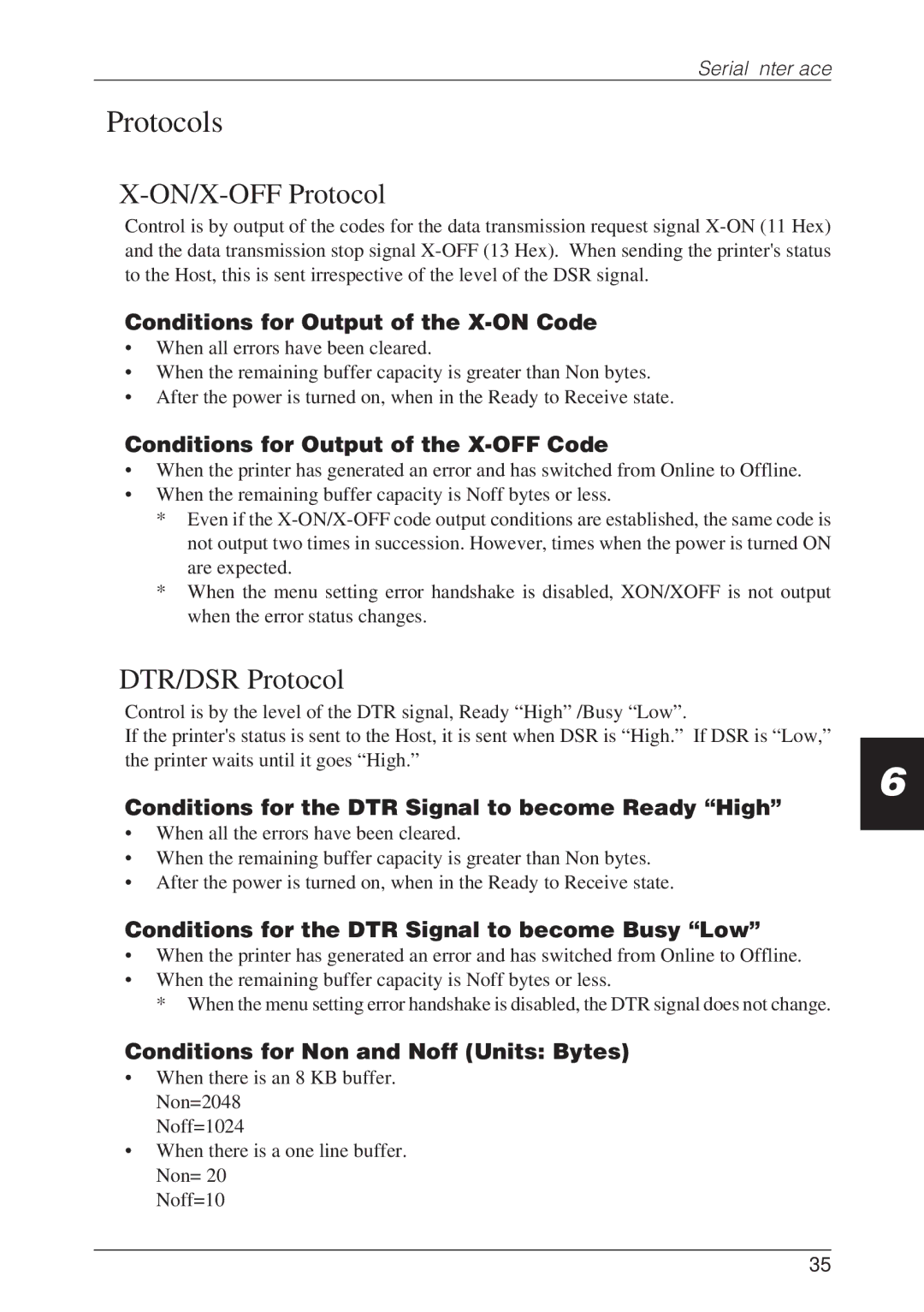
Serial Interface
Protocols
X-ON/X-OFF Protocol
Control is by output of the codes for the data transmission request signal
Conditions for Output of the X-ON Code
•When all errors have been cleared.
•When the remaining buffer capacity is greater than Non bytes.
•After the power is turned on, when in the Ready to Receive state.
Conditions for Output of the X-OFF Code
•When the printer has generated an error and has switched from Online to Offline.
•When the remaining buffer capacity is Noff bytes or less.
*Even if the
*When the menu setting error handshake is disabled, XON/XOFF is not output when the error status changes.
DTR/DSR Protocol
Control is by the level of the DTR signal, Ready “High” /Busy “Low”.
If the printer's status is sent to the Host, it is sent when DSR is “High.” If DSR is “Low,” the printer waits until it goes “High.”
Conditions for the DTR Signal to become Ready “High”
•When all the errors have been cleared.
•When the remaining buffer capacity is greater than Non bytes.
•After the power is turned on, when in the Ready to Receive state.
Conditions for the DTR Signal to become Busy “Low”
•When the printer has generated an error and has switched from Online to Offline.
•When the remaining buffer capacity is Noff bytes or less.
*When the menu setting error handshake is disabled, the DTR signal does not change.
Conditions for Non and Noff (Units: Bytes)
•When there is an 8 KB buffer. Non=2048
Noff=1024
•When there is a one line buffer. Non= 20
Noff=10
6
35
